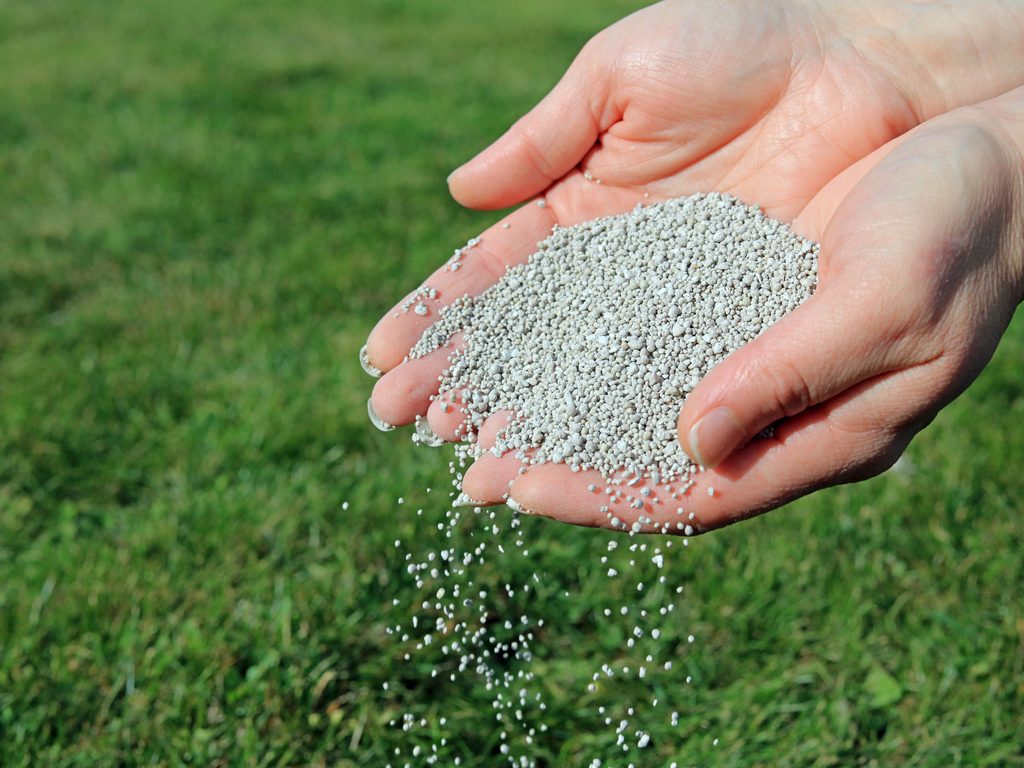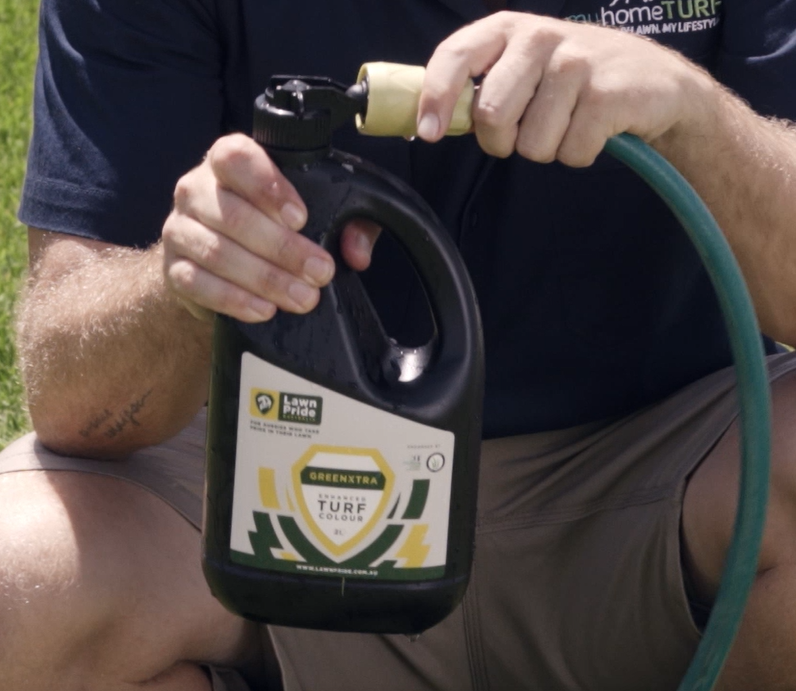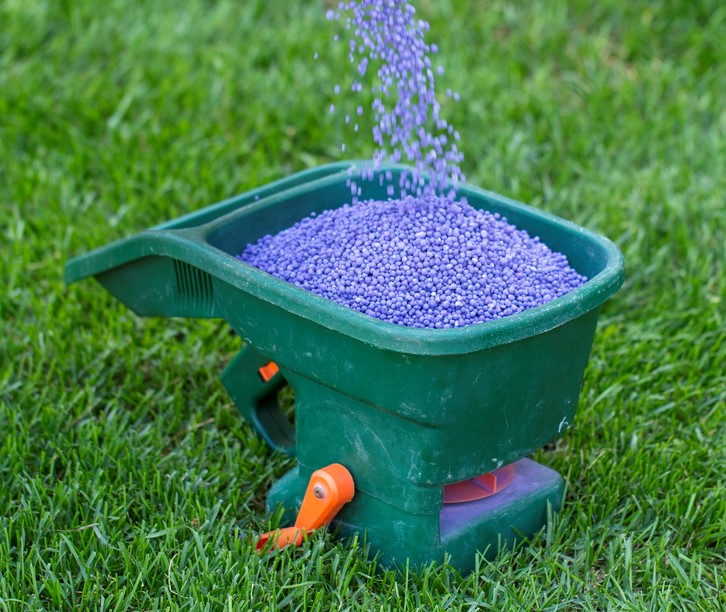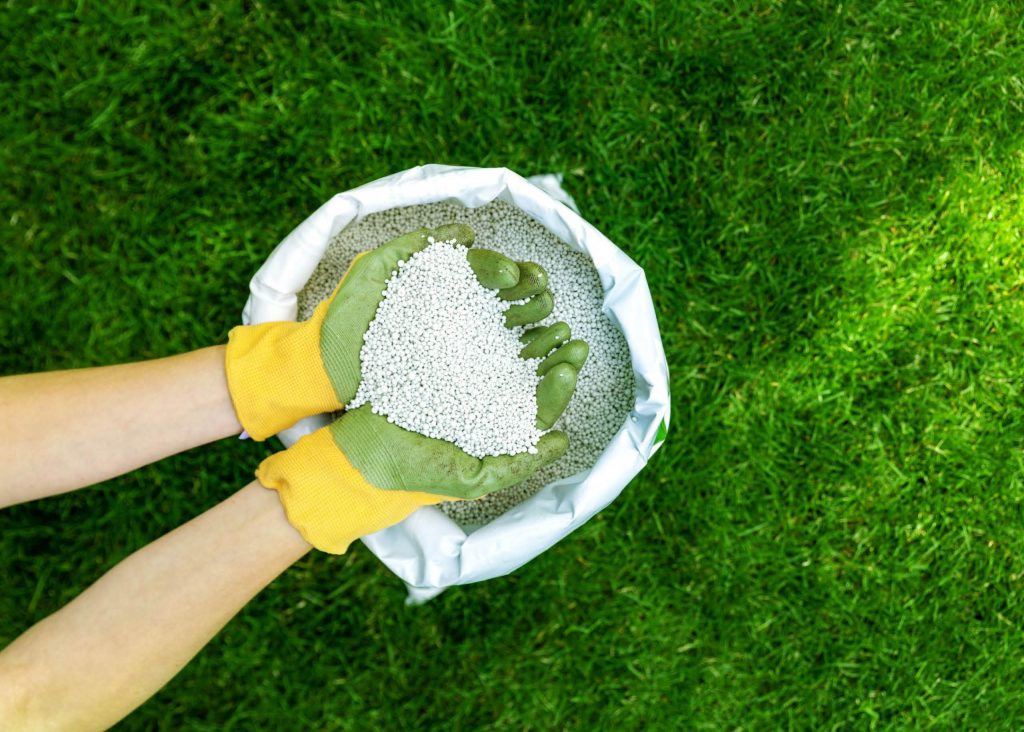Is it Okay to Fertilise Your Lawn After Mowing?
A beautiful, lush lawn is a source of pride for many homeowners. It not only adds to the aesthetics of your property, but also provides a functional space for outdoor ...

Springtime is go-time when it comes to fertilising your lawn and the best time for lawn care.
The soil beneath your precious lawn has warmed up and your grass is starting to grow again after winter and responds well to fertiliser.
Lawn is a living thing and it needs to be fed, just like you.
Therefore, spring fertilising creates a healthy, maintained lawn which is pleasing to the eye.
 And a regular lawn care program – starting in spring – keeps your turf dense and green.
And a regular lawn care program – starting in spring – keeps your turf dense and green.
Spring fertilising jumps-start your lawn for the rest of the growing season and aids its growth progress following the effects of winter, such as browning and thinning.
Spring fertilising is also great for keeping your soil nice and healthy – healthy soil means healthy lawn!
It is important that you know what sort of grass you have before purchasing your spring fertiliser, so you buy the correct one.
A good piece of advice before spring fertilising is to aerate your lawn as winter often causes a lot of compaction.
Aerating addresses compaction by putting small holes into the lawn therefore allowing the fertiliser to access the soil and improving air circulation –aiding your lawns growth.
Liquid fertilisers
Liquid fertilisers have the benefit of being able to be applied to both the ground or to the lawn foliage itself, also called foliar application.
Application of liquid fertiliser through the ground will result in the roots absorbing the nutrients.
Application to the lawn allows the leaves to absorb the fertiliser and have the nutrients more readily available for immediate use.
 Foliar application gives you the option of making mid-season corrections to add vital nutrients to your lawn if it didn’t get the correct mixture at the beginning of the season or, it your lawn needs a boost.
Foliar application gives you the option of making mid-season corrections to add vital nutrients to your lawn if it didn’t get the correct mixture at the beginning of the season or, it your lawn needs a boost.
Another main benefit of a liquid lawn fertiliser is that it can be easily administered to the largest of lawns in a liquid form and absorbed, not only by the lawn foliage itself, but also by the surrounding soil.
This is of great value to lawn care and while liquid fertiliser is commonly more expensive it can be more effective!
Again, the best fertiliser for your lawn is one that contains the nutrients your soil needs.
One of the advantages of using a liquid lawn fertilizer is that you can easily mix in any other nutrients your lawn and soil needs.
Whether you mix concentrate in a litre sprayer (the less expensive option) or purchase a pre-mixed bottle that attaches to your garden hose, lawn liquid fertiliser is more versatile than granular because you can apply it to the ground or the leaf foliage.
Slow release fertilisers
Most lawns respond well to a slow release fertiliser which can be found at the myhomeTURF online shop.
Using a slow release fertiliser twice during spring also allows you to stretch out the application process.
The first application of your slow release fertiliser should occur during early September (when the weather warms up) and the second application 6 to 8 weeks later – during November.

Another benefit of a slow release fertiliser is that a consistent level of growth and greening occurs across the life of the application with no spike in growth and no nutrient-run off.
It is important not to use cheap slow release fertilisers as these products tend to initially release a lot of nutrients and dwindle off quickly with nutrient delivery, resulting in an initial surge in growth and greening – however, consistent growth will not be maintained.
Traditional lawn fertiliser is often the cheapest lawn food choice but not necessarily the best.
 Traditional fertilisers also tend to dump their nutrient load immediately after watering in which often leads to high nutrient run-off into waterways and drains.
Traditional fertilisers also tend to dump their nutrient load immediately after watering in which often leads to high nutrient run-off into waterways and drains.
Application rates for traditional fertilisers are every 4 to 6 weeks and rely on the lawn being able to absorb the nutrients as they move through the soil.
However frequent applications of traditional fertiliser can have detrimental effects on the soil chemistry and therefore health.
A ‘true’ organic fertiliser is one that has been certified as 100% organic – so be sure to have that guaranteed when purchasing.
The simplest way to check that it is 100% organic is by looking for the Australian Organic Certified logo on the bottle or pack.
A recommended organic fertiliser is a blend of both a natural (organic) and synthetic (manufactured) fertiliser.
 Therefore, the use of an organic lawn food and soil improver combines the features of both a slow release fertiliser as well as natural ingredients such as seaweed, fish, manure and bio-stimulants.
Therefore, the use of an organic lawn food and soil improver combines the features of both a slow release fertiliser as well as natural ingredients such as seaweed, fish, manure and bio-stimulants.
Since organic fertiliser are natural products it is hard to over-fertiliser and in fact, they make your soil and plant health strong.
As organic fertilisers can be more expensive than other fertilisers it is possible to make your own by composting manure – such as from cattle or chooks.
The best time to apply your organic fertiliser in spring is either late September or early October.
Another application of organic fertiliser during winter – preferably late June.
New, unique herbicide formulations are available that when combined with fertilizer offer homeowners the ability to fertilize their lawn and control broadleaf weeds in one application.
Many products exist offering a wide variety of NPK and nitrogen sources to match the specific fertility needs of your lawn.
Types of combination product could include, pre-emergent weed control, post-emergent broadleaf weed control or a combination of both.
One of the most popular combined fertiliser and pre-emergent herbicide products is granular Oxafert which controls Summer Grass, Crowsfoot Grass, Winter Grass and Creeping Oxalis and offers an efficient NPK (nitrogen, phosphorus and potassium) application of fertiliser.
FIND YOUR LOCAL SUPPLIER: Your local Grower suppliers can easily be found with our online Supplier locator tool OR if you would like to obtain up to 3 QUOTES from your local supplier today – Click – get 3 quotes